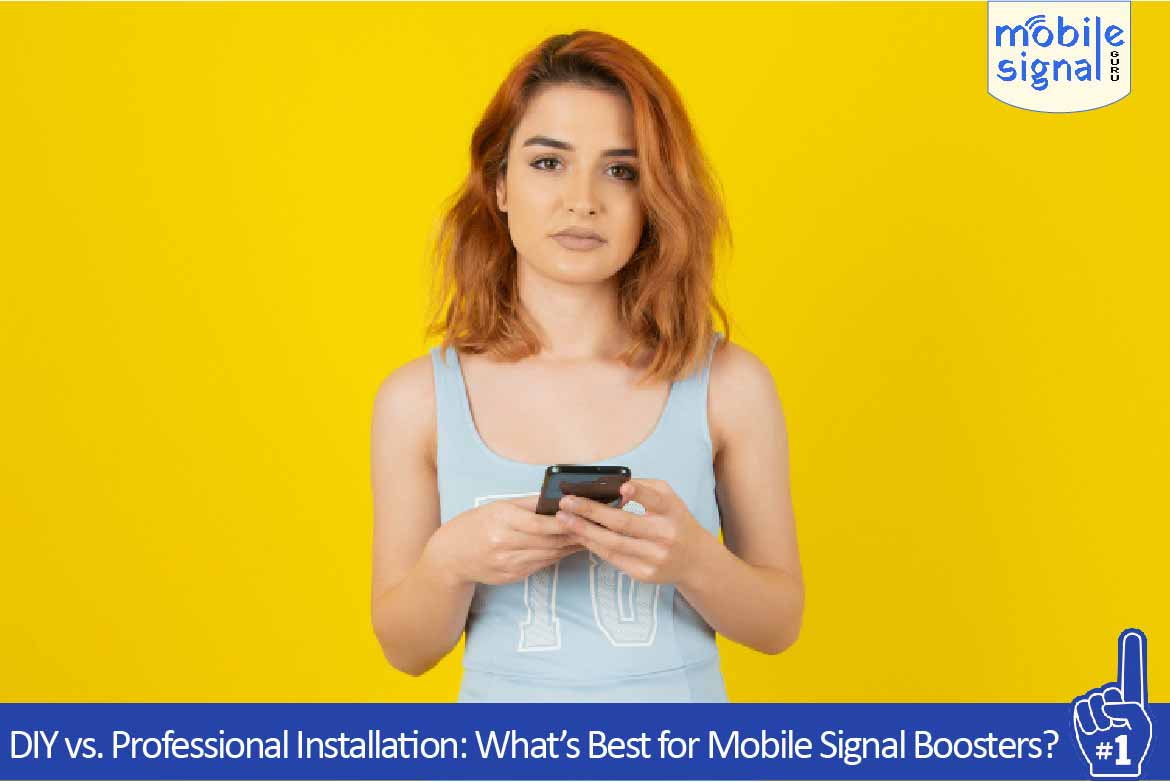Mobile signal boosters have become essential for uninterrupted connectivity in homes, offices, and vehicles. Choosing between DIY installation and professional installation is a key decision when setting up a booster. Each option has its pros and cons, and the right choice depends on your technical expertise, time, and specific needs. This article will help you weigh the options and make an informed decision.
Understanding Mobile Signal Boosters
Before diving into installation methods, let’s understand what a mobile signal booster does.
A signal booster:
- Enhances weak signals to improve call quality and internet speed.
- Consists of three main components: an external antenna, an amplifier, and an internal antenna.
- Works effectively when installed correctly.
Installation is critical to ensure the booster operates at its full potential.
What Is DIY Installation?
DIY installation involves setting up the mobile signal booster yourself. Most signal boosters come with a manual and installation kit, making them user-friendly for those with basic technical skills.
Pros of DIY Installation
-
Cost Savings
DIY installation eliminates the cost of hiring a professional, saving you money. -
Convenience
You can install the booster at your preferred time without waiting for an appointment. -
Learning Opportunity
Setting up the booster helps you understand its functionality and troubleshoot minor issues. -
Flexibility
You can make adjustments to the setup as needed without relying on someone else.
Cons of DIY Installation
-
Requires Technical Knowledge
Misalignment of antennas or incorrect connections can reduce performance. -
Time-Consuming
If you are unfamiliar with the process, installation may take longer than expected. -
Risk of Errors
Improper installation can lead to signal interference or even damage to the device. -
No Expert Guidance
You might miss optimal placement spots for maximum signal strength.
What Is Professional Installation?
Professional installation involves hiring a trained technician to set up your mobile signal booster. Many booster providers offer this service as an add-on.
Pros of Professional Installation
-
Expertise
Professionals have the knowledge to identify the best locations for antennas and ensure proper alignment. -
Time Efficiency
Installation is completed quickly and accurately by someone experienced. -
Optimal Performance
Professionals ensure that the booster delivers maximum coverage and minimal interference. -
Warranty Assurance
Some manufacturers require professional installation to maintain the warranty.
Cons of Professional Installation
-
Higher Cost
Professional services come at an additional cost, which can be significant. -
Scheduling Challenges
You may need to wait for an appointment, delaying the setup process. -
Less Control
You rely on the technician’s judgment, which may not always align with your preferences.
Factors to Consider When Choosing Installation Method
1. Technical Expertise
- Choose DIY if you are comfortable following instructions and handling tools.
- Opt for professional installation if you lack technical skills or experience.
2. Budget
- DIY is ideal for those on a tight budget.
- Professional installation is worth the investment for guaranteed results.
3. Time Availability
- DIY works if you have the time to research and install.
- Professionals save time, especially for large setups.
4. Property Type
- For small areas like apartments or cars, DIY is manageable.
- For large homes or offices, professional expertise ensures better coverage.
5. Signal Strength
- DIY is sufficient in areas with moderately weak signals.
- In extremely poor signal areas, professionals can optimize placement for better results.
Step-by-Step Guide for DIY Installation
If you choose to install the booster yourself, follow these steps:
-
Survey the Area
Identify the location with the strongest outdoor signal using your phone or a signal meter. -
Mount the External Antenna
Place the external antenna on a high point, like a rooftop, facing the nearest cell tower. -
Connect to the Amplifier
Use the provided cable to connect the external antenna to the amplifier. -
Position the Internal Antenna
Install the internal antenna in a central location for even signal distribution. -
Test the System
Check the signal strength and adjust the antennas if necessary for optimal performance. -
Secure the Setup
Once satisfied with the performance, secure all components to prevent movement.
Benefits of Professional Installation for Complex Needs
Professional installation is especially beneficial for:
- Multi-Floor Buildings: Ensures even coverage across all floors.
- Metal Structures: Reduces interference from building materials.
- Commercial Spaces: Handles complex setups with multiple antennas.
- Compliance: Meets regulatory standards, especially in sensitive areas like hospitals.
Common Mistakes in DIY Installation
-
Incorrect Antenna Placement
Placing antennas too close can cause feedback loops, reducing performance. -
Ignoring Line of Sight
Obstructions between the external antenna and cell tower can weaken signals. -
Loose Connections
Poorly secured cables can lead to signal loss. -
Overlooking Local Regulations
Ensure your booster complies with regional telecommunication laws.
Conclusion: Which Is Best for You?
The choice between DIY and professional installation depends on your unique situation.
- Choose DIY if you have basic technical skills, a smaller area to cover, and a limited budget.
- Choose Professional Installation if you want guaranteed results, have a large or complex setup, or value your time.
Regardless of the method, proper installation is essential for the mobile signal booster to work effectively. Evaluate your needs and choose the option that ensures seamless connectivity.
 Australia (AUD)
Australia (AUD) Denmark (DKK)
Denmark (DKK) France (EUR)
France (EUR) Germany (EUR)
Germany (EUR) Ireland (EUR)
Ireland (EUR) Malta (EUR)
Malta (EUR) Netherlands (EUR)
Netherlands (EUR) New Zealand (NZD)
New Zealand (NZD) Norway (NOK)
Norway (NOK) Spain (EUR)
Spain (EUR) Sweden (SEK)
Sweden (SEK) UAE (AED)
UAE (AED) United Kingdom (GBP)
United Kingdom (GBP)
